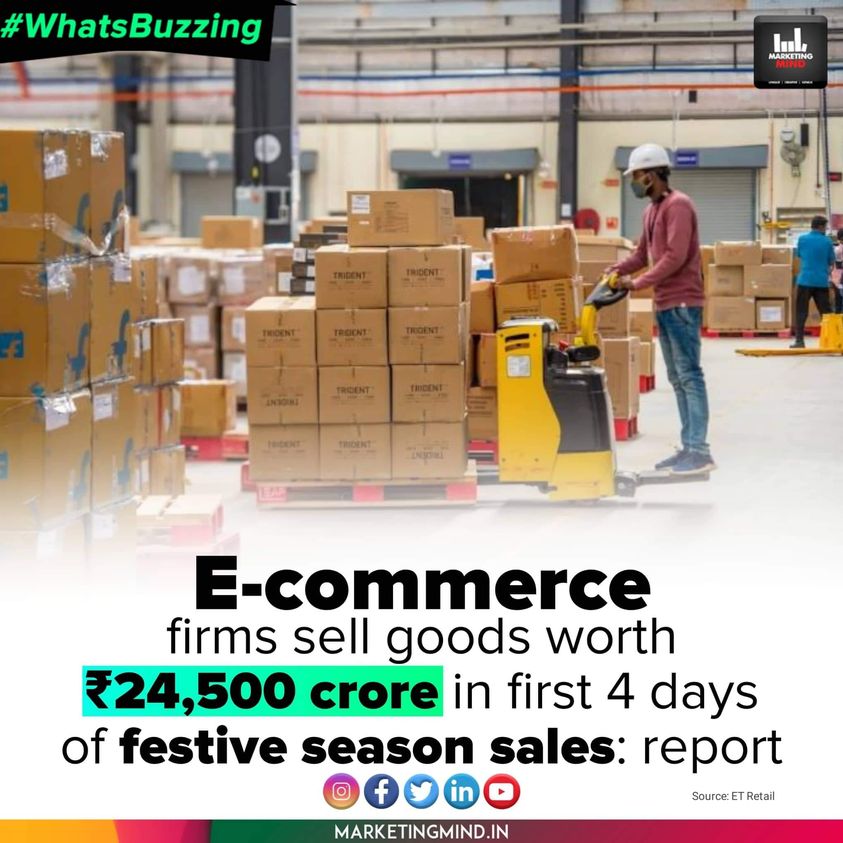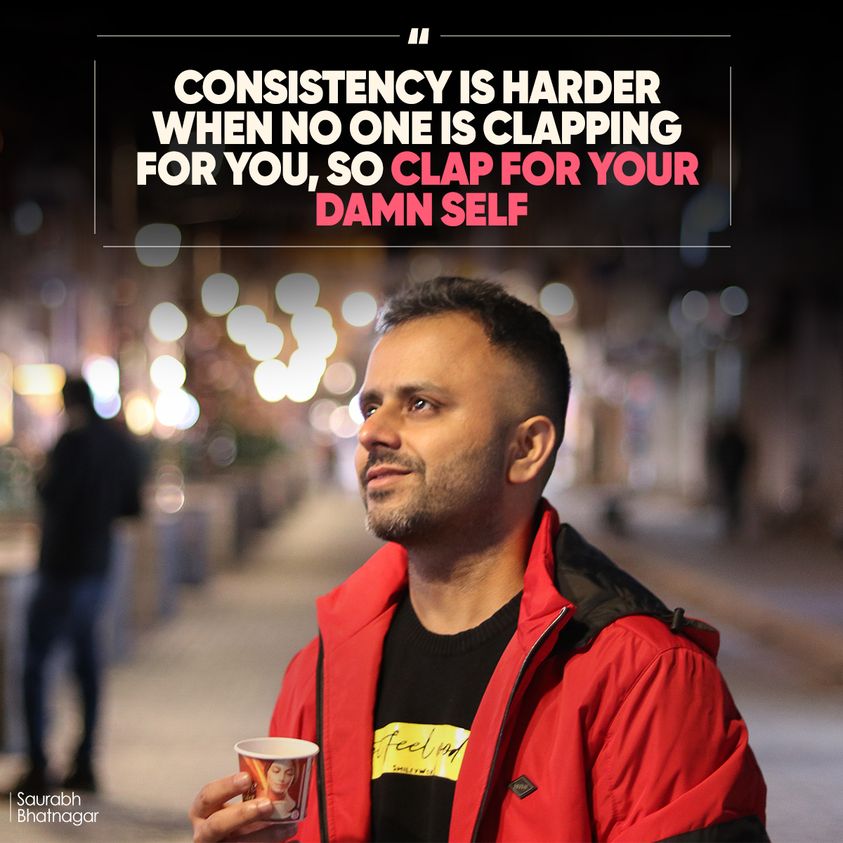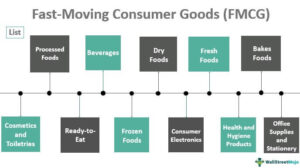When do fmcg brands become “challenger” brand? Is it pretentious to call products “challenger” brand?
Challenger brands are experts in the world of disruption. They have a vision of the future that requires a complete change in the status quo, and that pushes people to take notice.
Before we had the concept of the “challenger brand” in marketing, all we had was best practices designed to guide companies along the same route to success. This meant that everyone seemed to do the same thing, leading to a sense of overall boredom in the marketplace.

What are challenger brands? Challenger brand definition
Your challenger brand definition might differ depending on who you ask. However, ultimately, a challenger brand is a company that lives and dies by a specific mindset. They have huge goals and life-changing ambitions, and they’re prepared to do something bold to transform the current market.
Challenger brands today are more likely to fight against a specific concept, than a person. For example, Warby Parker rose to fame as a challenger brand by tackling the issue of overpriced eyewear, while “Body Shop” addressed the idea that luxury cosmetics could be cruelty-free.
Although challenger brand marketing isn’t always easy, there are considerable advantages to taking this route for your business. For instance, you can choose a place to stand in your industry and focus on fighting for one ideal over all others. This clarity around your purpose leads to a drive and identity that even market leaders can’t match.
To help you begin developing your own challenger brand definition, here are the 3 criteria associated with challenger brands:

State of market: You can’t be a brand leader and a challenger brand at the same time. You need to rail against a specific concept, which means that you’re not going to please everyone.
State of mind: Challenger brands are defined by their state of mind. They have an idea of what the world should be like, and they’ll work tirelessly to achieve that change.
Rate of success: If you design a successful challenger brand strategy then you should notice a positive amount of growth and development in your business. This doesn’t mean that you’ll always be successful, but you should be making progress towards your goals.
Building your challenger brand strategy: Steps for success

So how does a brand become a challenger?
Challenger brands are businesses that focus almost entirely on a specific goal. They might want to challenge perceptions about beauty, like Dove, or they may hope to disrupt an entire industry, like BrewDog.
Becoming a challenger brand usually means that you start off small, with nothing more than an idea, and a garage. However, no matter how small you might be, to begin with, your endgame is usually to outshine market leaders and change the status quo.
10 different types of challenger brands that embody the variety of ways this status can be used to attract new customers and foster loyalty — at the expense of the industry’s current champion.
Let’s take a look at those 10 strategies.
Missionary: Essentially an activist brand, these brands put a “strong sense of purpose” at the core of their identity — good examples include Akshay Patra,Iscon,Himalaya,Wipro, Amul,Mahindra or Patanjali.
Real and Human: A smaller-scale operation fueled by passion and run by real people rather than corporate drones. Lush, which labels its products with the names of the employees who created them, is a strong example of this type of brand.

Next Generation: These brands call out the status quo and often provide a complete alternative to a whole category, asking whether traditional brands are appropriate, sustainable, or even relevant anymore. Brands like Dunzo, Swiggy, Hyfun Foods and Travel and Entertainment ability provider Trivago, Bookmyshow certainly fit this description.
People’s Champion: By portraying themselves as advocates of consumer rights, People’s Champions highlight their own fairer alternative to industry leaders that have taken advantage of their dominant position for too long; A lot of Neo-banks brand themselves this way.
Enlightened Zagger: These brands purposefully resist current trends or technological advancements in favor of stripped-back, simplified offerings. They’re the branding equivalent of choosing a record player over a music streaming service. A good example is the Slow Journalism Magazine.

Democratizer: In industries that were formerly closed off and inaccessible to most, Democratizers portray themselves as brands that are breaking down barriers and inviting more consumers to take part. Patanjali, which offers a more inclusive range of cosmetics for people with a wider variety of skin tones, is a prime example.
Irreverent Maverick: Plucky underdogs through and through, Irreverent Mavericks use their smaller profile to be provocative and playful and challenge the corporate blandness of industry leaders. Think Jio,Tata Wipro or Nirma .

Feisty Underdog: These are brands that define themselves mainly as the main binary alternative to a market leader. Examples include Reliance, Tata, Infosys, Adani,Biocon …
Dramatic Disruptor: Similar to Next Generation challengers — these brands aren’t trying to undermine their entire category but represent a significant leap forward. At the core of these brands’ identities, is an offering that is superior to the current market leaders.
Local Hero: These brands have a deep sense of place at the core of their brand, and champion the needs of the community around which they are based — and which they serve. Usually, this is portrayed in direct opposition to the international character of market leaders.

These identity types offer brands numerous ways to build out a brand story and mission that can then effectively draw consumers away from the competition. But remember that even those brands that portray themselves as challengers can still end up dominating their category — Oatly, BrewDog, Tesla, and Apple are all great examples.
When Cortez burnt his ships, he not only denied his men a way back, but more importantly, he denied himself that same option. If things went badly he would suffer the same consequences of his decision as his men would.

Today, a CEO may decide to dramatically alter the course of the business they lead, but if things don’t workout, the people working for them in that business (the foot soldiers) end up paying the price (unemployment) while the CEO’s and upper management (generals and senior officers) usually just go to the next business via the ‘old boys’ network.
Seldom do the CEOs suffer equally, from the decisions they make, with the people who work under them.
John’s point is one of strategy, not one of history or geopolitics. Sun Tzu, too, taught armies to burn their ships and destroy the bridges behind them as they advanced into new territory… and that soldiers without the option of taking flight are more likely to prevail over their objective. If a sales team can choose the often more comfortable path of sailing back to their old, comfortable ways… they are less likely to focus forward. In an age of such frequent innovations and disruptions across so many industries, “the way we used to do it” is a terrible place to hide.

After Patanjali, Reliance Retail has been the next big disruptor in FMCG
Other FMCG companies will have to increase their advertising spends in segments Reliance makes a meaningful acquisition in order to stay competitive.
One of the companies that has managed to disrupt the FMCG space with its automation technology is Bengaluru-based Mukunda Foods. Its machines – DosaMatic, Eco Fryer, RiCo and Wokie, are all manufactured in-house, and used to make dosas, rice, noodles, and curries without any human intervention.
.
Here are a few ways that you can build your own challenger brand strategy:
Make your mark
To become a challenger brand, you need an identity. Challenger brands are successful because they carefully define what they want to change in the marketplace, as well as the strategies they’ll use to initiate change.
For example, ”The Challenger Project” – a group which studies challenger brands, suggests that challengers can use their business as a vehicle for universal change, but they need a vision that remains razor-sharp from one year to the next. In other words, you need to decide what you stand for, what you stand against, and how you’re going to place yourself in the industry.
A company that made their mark is Ovo Energy, a challenger brand that took on industry leaders who they felt were over-charging the current marketplace.

Think and act differently (but with focus)
A successful challenger brand strategy is about more than simply telling people that you’re going to make a change. If you want to break through the existing clutter in the industry, then you need to create a message that’s entirely unique.
Thinking and acting differently with a differentiation strategy is a great way to improve your chances of earning attention. However, as with most things in branding, it’s important to make sure that you’re targeting the right audience with your messages.
While your challenger brand definition will involve challenging the current mindset, that doesn’t mean adopting an identity that no-one else can get behind. Take the time to ensure that your message resonates with your audience before you begin advertising.

Be bold and emotional
Many challenger brands find success presenting themselves as a “David and Goliath” story. In other words, you find something about the leading brands in your industry that your customers don’t like and present yourself as the company that’s willing to fight back against that injustice.
Of course, being “disruptive” in any niche is something that’s bound to lead to controversy. You’re going to inspire criticism, and you need to be willing to take the bad with the good. When BrewDog first began, it’s aim was to deliver a craft beer experience with attitude – unlike anything else in the world.
While BrewDog has grown more popular by the day, with countless customers investing in equity with the company, it’s also seen some backlash, with legal battles, angry people opposed to their “swear-friendly” marketing techniques, and copyright disputes.
Transform the market
There’s a difference between choosing a market positioning statement that allows you to target a larger market than your competitors, and being a challenger brand. If you’re hoping to disrupt an industry, then you can’t just provide a slightly different service.
Think about what Google did to the state of search on the internet, or the way that Skype transformed the way we communicate with people online. These challenger brands offered a service that was above and beyond anything else in the space, which allowed them to earn the respect and attention of their audiences.
While not every challenger brand strategy will lead to a world-changing product or service, if you can strive to transform the industry for the better, then you’ll be rewarded with the love and loyalty of your customers.

Never back down
Challenger brand marketing is a stressful business. In fact, one of the biggest obstacles that most challenger brands face is the temptation to step away from the elements that set them apart from the competition to draw more happy customers into their midst.
All companies, big or small, will suffer from low points in their performance, and challenger brands can be particularly poised for trouble. It’s common when things get rough, for some businesses to panic and pursue the “safe” option, instead of maintaining their challenger status.
Unfortunately, backing away from your initial identity could erode the trust that people once had in your brands, and diminish your “challenger” credentials. If you’re going to create a challenger brand strategy, then you need to be willing to stick with it.

Leaders of the pack: Challenger brand examples and “types”
When determining your challenger brand identity, it’s important to note that there’s more than one kind of “challenger” that you can be.
The first step in your plan should be to define what your narrative is going to be as a company, and how you’re going to present yourself to the world. This is a process that will naturally develop as you go through the brand building process, finding your tone of voice, image, and even your brand story.

Challenger brand types: The irreverent maverick
As the name might suggest, the “Irreverent Maverick” challenger brand is the company that’s willing to go to any measure to turn the industry upside down. These businesses are about attitude and transformation. They’re willing to take risks, overwhelm, and get on the bad side of the right people to impress their customers.
For an example of a maverick brand, think of Nando’s, a business designed to spicing up the world with vibrant colours, African design, and heat-packed advertising strategies. Another example is “Red Bull”, which is an organisation known for its willingness to tackle almost any challenge. From the Felix Baumgartner experience to yearly challenges for its fans, Red Bull know how to change the way people look at energy drinks.
![]()
Challenger brand types: The human being
One of the qualities you’ll see in many challenger brand examples is the decision to focus on “people” instead of profit margins. Challenger brands are all about making a crucial change in the industry, and the reason they do this is to make the world better for a specific group of individuals.
“Human” challenger brands appeal to the market on a more personal level, by showing the faces behind the company and working on affinity with their audience. Think of Innocent – the company devoted to making consumers healthier, and improving the state of the food industry at the same time.
Innocent’s commitment to corporate social responsibility, their adorable and ethically conscious marketing campaigns, and their unique brand identity make them a naturally more “human” challenger brand.

What do you think are the current challenges & the future of Brand Management in FMCG industry in the world?

For traditional FMCG players, digitization is one of the most disruptive trends. Each component of the value chain, from R&D to distribution, will be profoundly impacted. AI, data analytics, IoT, robotics, machine learning, RPA, and additive manufacturing are cutting-edge technologies that will transform FMCG research departments, factories, warehouses, and stores while improving customer experience and engagement.
These technologies will automate redundant and low-value-added tasks and optimize internal processes. They will improve client intimacy by leveraging data to provide perfect customized solutions to billions of customers.

In the industry, there will be a significant structural shift from mass production to mass personalization. For decades, players in the personal care and food and beverage industries have served their customers with a mass-market mindset. Nonetheless, a significant portion of their product portfolio is related to intimate and personal factors such as skin and hair type. The pursuit of personalization is reshaping industry norms.
Personalization is posing significant challenges for traditional FMCG players. The implications for sourcing, supply chain management, real-time production, packaging, distribution, marketing, and sales are critical.

Sales in recent years, businesses have been working to understand the sales equality of prices, promotions, and discounts offered to their customers. The value chain has become restructured, necessitating a thorough examination of the contributions made by each link in the chain.
It is necessary to create a concept of “multichannel sales equality” so that a consumer does not perceive inconsistency in the price paid for a product based on the purchase channel or area.
Modern retailers have been attempting to extract higher margins from FMCG firms in order to provide better deals to their customers. The FMCG sector must, however, consider the impact of higher discounts on modern retailing on the overall distribution system, too.

Product quality affects both cost and revenue in the short and long term. Through a thorough examination of the production line and quality processes related to product development, Business Intelligence assists in determining the root causes of poor quality.
Systems can aid in the detection of patterns and the prediction of failure, as well as the identification of components for repair and maintenance at low-impact times, thereby improving the quality of your finished product. FMCG companies can ensure the quality of their products by being able to dive deep into the possible causes of failure.

Because of the growth of the omnichannel experience, the once-standard delivery model has now fragmented into multiple delivery models. Customers are technologically savvy, and their needs are constantly changing. As a result, FMCG companies are exploring and testing newer, more innovative delivery models.
Using analytics, FMCG companies can identify the most efficient and successful business models based on customer profile data and success factors. Having a highly flexible dynamic delivery model can help to keep sales costs low.
What are the challenges when it comes to branding?
Under current competitive market environment numerous challenges are faced by brand managers:

Educated and well informed customers: In today’s times customers are well-educated about the different brands available in the market. Technological revolution has witnessed availability of enormous information at the click of a button, and thus customers make prudent decisions, keep track of competitive brand offerings, compare and choose wisely.

Growth of private labels: With organized retail picking up in India private labels are brands owned by the retailer themselves. FMCG companies like HUL, P&G and ITC are facing stiff competition from these retailers created brands, in apparels private labels owned by Future Group Are Bare, John Miller and Indigo Nation and in FMCG their private labels include Tasty Treat, Fresh n Pure. ‘More’ store is an Indian retail chain operated by Aditya
Birla Retail Ltd. and its own labels include Feasters, Kitchen’s Promise, and Best of India under food brands and Enriche, 110%, Pestex, Paradise and Germex are its Private Labels under Personal care brands.

Proliferation of Brands: Competition has intensified in all sectors and today there are a number of brands vying for consumers’ attention. Globalization has lead to brand explosion across geographical boundaries further creating difficulty in brand differentiation among competing brands.
Bargaining power of channel intermediaries: Distributors, wholesalers and retailers are becoming more demanding forcing organizations to engage in more trade sales-promotion tools to motivate trade members to sell their brands.

Innovations in media and media fragmentation: The increase in the number of radio channels, television channels, newspapers and magazines has resulted in the divided attention of the target audience. This has become a stumbling block for marketers as the promotional budget has to be spread over a number of media, resulting in costs escalation and uncertainty regarding capturing audience attention. Social networking sites like YouTube, Facebook and twitter also has to be effectively roped in organization’s promotion plan for effective outcomes.
Enhanced IMC (Integrated Marketing Communication) activities: Brand managers have to cover lot of IMC tools besides advertising like, internet marketing, events and experiences, sales-promotion, public relations activities to create their brand presence.

Increased employee turnover: A brand is a long term investment and it calls for consistent commitment of brand promise by a team of dedicated employees and in case of employees exit brand essence takes a beating.
Online shopping: Internet has opened doors for on-line shopping which is different from traditional mail order as customers have access to brands all the time and from all over the globe and information and interactions are in real time. Consumers are able to select between brands that meet their expectation by seeking information in a more convenient format in place of the standard catalogue format. This poses threats for brands as some components of added value, agent or the retail outlet which traditionally enhanced value by matching consumers with suppliers, may be eliminated.

What comes first, marketing or branding?
We all are aware of an ancient riddle that says, ‘What comes first; the Chicken or the Egg?’ The same question arises in our minds when we think about Branding and Marketing. ‘What comes first; Branding or Marketing?’
Do you know what comes first?
Branding and Marketing are very much interconnected with each other that it becomes tricky to find out what comes first. The most successful companies focus and give equal importance to both brandings as well marketing. But, Branding comes first as it indicates who and what the organization is and always lives in the heart and minds of the customers; whereas marketing comes second by giving its support to the brand which is helping to find and motivate consumers. Both the terms have their own values.

Ridiculously, Branding is the Engine and Marketing is the fuel needed to run it. If there is no engine then where the fuel would go? It is the branding that gives the market a platform to showcase the talent. Also, marketing is the one without which a brand cannot get highlighted. They both are associated with each other; and incomplete without each other, as a story is incomplete without its essence.
A lot of challenges because every tiny detail counts. Building brand is like building a mechanic timepiece — just miss a gear and it will not tick.

First challenge is to avoid the pitfall of “brand is logo”. Indeed it’s not that seldom even nowadays to come upon big companies who think that branding is all about the logo.
Never start branding project without clearly defining the problem. Branding just for the sake of branding will lead you nowhere. You have to know what exactly needs to be solved because branding is ALWAYS STRATEGIC and there can be no strategy without a clearly articulated goal. In my opinion about 90% or all branding projects actually have this problem.

Do not assume that people never misjudge the situation — everything you’re told are just hypothesis that need to be verified and tested via research. If there is a flaw in master data it may undermine the whole project.
The strategy actually has to be strategic. And usually it is not…. The whole idea of strategy is that it should be competitive. Strategy is always relational to competitors both direct and indirect.
Strategy has to encompass three main areas:
The needs, wants and problems of your potential target customers.
What your competitors are offering and their strengths and weaknesses.
Who you are and what you actually have and can deliver.
Bridging the gap to creativity. Good strategy is not enough — it has to be actionable. It has to be brought to life via creative solutions like logo, corporate style, imagery, ads, all communications, web, packaging, products, environments, all kind of designs etc. If strategy is ignored or translated wrongly… well… What can you expect?

Ongoing evaluation and systematic monitoring for everything to be “on brand” and for strategy to remain relevant…
All in all the main challenge though is to understand branding as a system for very often we’re like those blindfolded men who had never seen an elephant before. Some say that branding is loyalty. Some say that branding is focus. Some say that branding is something else. But actually branding should be seen and treated as a system, as a whole not as separate parts. And that indeed is a challenge for it requires good understanding of all the elements and how they interact to make the system work.
Enter Innovator Brands
A survey by Brand Keys on behalf of Business Performance Innovation (BPI) Network indicates that household brand names are being replaced by innovative game changers, and they’re gaining respect with mainstream consumers. “Nimble startups compete with legacy enterprises,” say 98 percent of those asked and “the disruption is severe,” indicate 37 percent. Furthermore, there is a “distinct correlation” between perceived innovation and a company’s bottom line results, according to the study.

Challenger Versus Disruptor Brands
The terms challenger brand and disruptor brand are not interchangeable. Challenger brands bring innovation, enhancements, new pricing, or other tweaks (diet soda, dishwasher tablets, boy and girl nappies) to an existing marketplace.
Disruptors enter a marketplace and completely set heads spinning. When eBay appeared, for example, it was difficult for many people to accept paying online in advance for an item from a stranger and simply trusting it would arrive in the post. When email gained traction, traditional mail service was rattled and companies were required to re-define legalities in their terms and conditions. And when Airbnb was introduced, the hotel industry was more than mildly shocked; cities are still attempting to define tax issues.
![]()
What is a Challenger Brand?
From the original biblical tale, best-selling author Malcolm Gladwell borrows a title, “David and Goliath: Underdogs, Misfits, and the Art of Battling Giants,” reminding us that compelling storytelling has long been at the heart of a challenge. In brand marketing today, some famous challenges fall into the hero/underdog sort (Coke vs. Pepsi, Avis vs. Hertz; McDonalds vs. Burger King); others make into it a three-way contest, or even a Big Four fight (Tesco, ASDA, Sainsbury, Morrison’s).

Still other challenger brands enter a crowded category or endeavour to maintain challenger momentum once it starts to fade. Enter the game changers, disrupting the status quo by creating altogether new categories (Match.com, Uber, Airbnb), thus far a hallmark of 21st century disruptor brands.
In discussing the rise of the challenger brand, CMO of Adobe points out, “Essentially, the heart of a challenger brand is the passion, process, and tools they use to create and magnify customer advocacy.” Reflect on those overnight queues snaking around the Apple Store in anticipation of new product releases. “The heart of challenger brands’ success is their ability to turn emotion and affinity into a customer acquisition machine.”[4]
Purpose = Purchase = Profitability

Why can challenger brand outperform established brands?
Challenger brands often succeed thanks to a scrappy, nimble ‘underdog mentality’ – but they can lose that edge as they grow. As brands grow into household names, it’s important to keep thinking like an underdog.
Feeding the hunger for continuous learning
Competing with yourself
Maintaining likeability through authenticity and respect
One reason why people enjoy rooting for the underdog is because they ‘like’ them. They seem nice. They work hard. They see themselves in the underdog. As your brand grows and perhaps rises above the status of a challenger brand, maintain the likeable ethos that got you there.
For many brands, that means fostering an authentic brand voice and making your brand feel accessible to consumers. Another way is by gaining and retaining respect from your customers and even other brands for your values, your business practices, or your willingness to give back to communities.
Challenger brand experts Adam Morgan and Mark Holden wrote a book on the subject, “Overthrow: Ten Ways to Tell a Challenger Story,” (with all profits going to UNICEF). In it, they list 10 types that represent the challenger brand state-of-mind. These brief descriptions may help you evaluate and identify your own brand’s personality, purpose and positioning.
Disruptive Innovation, Thought Leadership and Lack of greed.
They could take the Leader head on or
Be content with carving out a niche and expanding it.
Segment a Category basis Benefits/Needs/Platforms sought, or basis Lifestage and address an underserved Market even if it means less scale.
Segment basis Price, Geography- India/Bharat or Region- NEWS, Distribution Channel, variables.
Bring in a Product, Packaging, Price, Proposition discontinuity.
An example- Of Platform Segmentation by a Regional Challenger.
In 2009, Parachute coconut hair oil was and still is generic to the coconut oil Category in the South- a dominant Leader. Dabur amla hair oil, a niche player operated on the fringes with single digit usership, volume share.
The Coconut oil Category is segmented on the Platforms of Nourishment, Hairfall control, Non stickiness, Fragrance, Dark black hair, Problem free hair. These are the Need states it satisfies.
What are key consumer trends that are forming your growth and marketing strategies?
Consumers, particularly our target segment – millennials and Gen Z, are far more aware of technology trends and so the desire to buy and use world-class products and designs increases by the day.
This is the moment of reckoning for Indian brands. There’s a much higher pride that consumers are feeling about brands that are born in India.
In an ever-shifting marketing landscape, innovation, agility and consumer insights can make or break a business. Legacy brands with well-established names and challenger brands breaking into the space must stay equally competitive to gain and retain a loyal audience.
Examples of Successful Challenger Brands
What are some of the up and coming FMCG brands challenging the ‘billion dollar’ brands?
Reliance to acquire several brands in over Rs 50,000 cr consumer goods play
The consumer goods push under a vertical named Reliance Retail Consumer Brands will come on top of Ambani’s brick-and-mortar store network of more than 2,000 grocery outlets and ongoing expansion of “JioMart” e-commerce operations in India’s nearly $900 billion retail market, one of world’s biggest.
Reliance is in final stages of negotiations with around 30 popular niche local consumer brands to fully acquire them or form joint venture partnerships for sales, said the first source familiar with its business planning.
The 17 billionaire brands in the global FMCG brands ranking revealed by the Brand Footprint report.
Rank | Brand | Penetration (%) | Consumer choice (choices by shopper) | Consumer reach points (m) |
1 | Coca-Cola | 41.3% | 12.7 | 5817 |
2 | Colgate | 61.6% | 5.7 | 3886 |
3 | Maggi | 30.4% | 7.4 | 2489 |
4 | Lifebuoy | 27.5% | 7.8 | 2375 |
5 | Lay’s | 29.1% | 6.4 | 2073 |
6 | Pepsi | 22.7% | 7.8 | 1971 |
7 | Nescafé | 22.3% | 7.9 | 1955 |
8 | Indomie | 4.7% | 34.9 | 1817 |
9 | Sunsilk/Sedal/Seda | 23.8% | 6.8 | 1799 |
10 | Knorr | 27.1% | 5.8 | 1748 |
11 | Dove | 36.8% | 4.3 | 1748 |
12 | Lux | 32.6% | 4.2 | 1526 |
13 | Nestlé | 28.5% | 4.5 | 1439 |
14 | Sunlight | 11.4% | 10.4 | 1322 |
15 | Downy | 14.2% | 8.2 | 1290 |
16 | Palmolive | 16.2% | 6.1 | 1105 |
17 | Sprite | 24.8% | 3.8 | 1040 |

Local brands and global brands
The study also shows that local brands grew , taking 64.6% of all brand spend, versus global brands’ 35.4% share, with every 0.1% gained now worth $500 million. This highlights the continued march of local brands winning share from the global players.
Global brands are stronger but still losing share in the homecare, and beauty and personal care categories, taking 47% and 58.4% of global spend per sector respectively. It was only within the beverages sector that global brands are winning, having gained share from local brands three years in a row (38.3% global versus 61.7% local in 2018, compared to 38.1% global vs. 61.9% local earlier).
Global and local brands market share
Earlier | Recently | |||
Global Brands | Local Brands | Global Brands | Local Brands | |
Total FMCG | 35.8% | 64.2% | 35.4% | 64.6% |
Food | 27.1% | 72.9% | 26.6% | 73.4% |
Drinks | 38.2% | 61.8% | 38.3% | 61.7% |
Dairy | 20.6% | 79.4% | 20.0% | 80.0% |
Beauty and Personal Care | 58.8% | 41.2% | 58.4% | 41.6% |
Homecare | 47.7% | 52.3% | 47.0% | 53.0% |
IKEA
With 373 stores in 47 countries, no one would call Ikea a small company. Yet, it was born as a challenger concept in the back woods of Sweden in the 1940s: inexpensive flat-packed furniture for self-assembly, sold via a catalogue and warehouse showroom.[7] By remaining functional, simple, and design-led, Ikea has managed a harmonious marriage built on durable pillars of inexpensive, yet decent quality. Partnering with UNICEF among three dozen other NGOs and IGOs, IKEA Foundation[8] is considered the world’s largest charitable foundation, with an estimated net worth of $36 billion.

Storefront
Build an online store with limitless customization,
100+ integrations, multi-store functionality and
advanced Product/Customer Management
Growth Marketing
Full-funnel marketing strategies that drive the most engaged customers to your site for less.
Fulfillment
Seamless nationwide delivery in two days or less to compete with the world’s biggest brands.
Customer Engagement
Transform customer support from a cost center into a profit center with experts who know (and grow) your brand.
Actionable insights and business intelligence to help brands grow. No digging required.
Tesla Motors
Inventor, engineer and investor, self-made billionaire Elon Musk has a stable of disruptive products across multiple industries. From artificial intelligence to solar power to reusable rockets for space exploration, Tesla Motors electric cars are Musk’s best-known challenger brand. His entire stable of companies exist to contribute to Musk’s overarching vision: protecting Earth and humankind via sustainable energy sources and reducing the risk of human extinction by becoming a multi-planetary species. “Really pay attention to negative feedback,” is one of this entrepreneur’s top tips. Next up? “I really want to go to Mars,” says Musk, “It’s a fixer-upper of a planet.”[13]
A View from the Challenger Brand Grave
No stranger to failure, Steve Jobs said in his 2005 Stanford University commencement speech, “You have to trust in something — your gut, destiny, life, karma, whatever. This approach has never let me down, and it has made all the difference in my life.”[14]
And for challenger brands which do reach their goal, they must innovate, innovate, innovate. Success has a great way of dulling the keen edge of ambition; challenger brands can reach a comfort zone of complacency and constant change is the only answer.
Top most festival Products FMCG consumers search today
World Wide Festive Trends Decoded What Indian festive consumers seek...
Read MoreHow right selection of FMCG Salesmen improves brand market share
How can FMCG Companies improve salesman’s technique in order to...
Read MoreHow most searched Fmcg sales and marketing words help newbie salesman
Why undestand FMCG sales management? Sales management is the process...
Read MoreHow Successful FMCG Salesman Starts his Day, a guide
How does one become a good sales executive in the...
Read More









